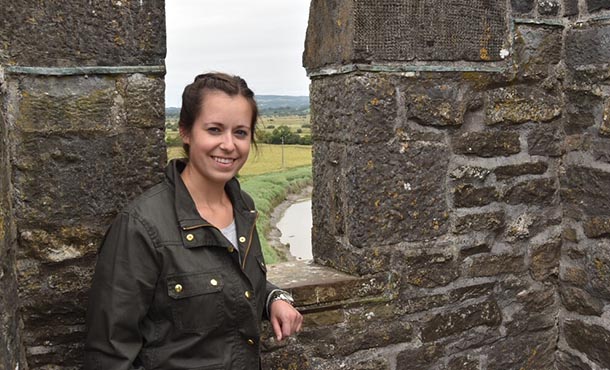
Melissa Brindise, assistant professor of mechanical engineering at Penn State, began her appointment in August. IMAGE: PROVIDED
New professor to advance the understanding of brain aneurysms, heart disease
Mechanical engineering's Melissa Brindise will explore the fluid mechanics of the cardiovascular system, in the hopes of improving the diagnosis and treatment of these life-threatening conditions
8/4/2021
By Erin Cassidy Hendrick
UNIVERSITY PARK, Pa. — The human cardiovascular system pumps blood from the aortic valve in the heart to the body’s smallest capillaries, exhibiting unique and dynamic fluid mechanics. Despite its life-sustaining importance, a lot remains unknown about the complex physics occurring within these vessels, especially when there are blockages or bulges, such as aneurysms.
Melissa Brindise, a new assistant professor in the Penn State Department of Mechanical Engineering who began in August, is determined to help change that.
“On a broad scale, I want to look at biological flows and study the way blood or other fluids move within the body,” she said. “How can we study it and analyze it better? And how can we use that knowledge to better inform diagnostic or treatment capabilities for physicians?”
One area Brindise focuses on is how to better treat brain aneurysms. This condition, characterized by a bulge in a blood vessel, is thought to affect between 3 and 5% of Americans, according to the National Institute of Neurological Disorders and Stroke. Brindise said that as many as one in 12 people are estimated to have an aneurysm in their brain, almost all without any symptoms or impacts to their health.
“Most of the time, we find out because it has ruptured,” she said. “But it would be great if you could know you have this potential ticking time bomb in your head and also whether it will need surgery.”
Brindise said she plans to develop enhanced image and signal processing methods for medical tests such as electrocardiograms (EKG) and magnetic resonance imaging (MRI), to aid those diagnosing and treating patients.
“I hope to develop tools that better support clinicians, to improve their capabilities to make objective, data-based decisions” she said.
While she earned her undergraduate degree and completed internships in aerospace engineering, Brindise found applying her mechanical engineering expertise to potentially improve human health more appealing.
“When I hear about an otherwise healthy 24-year-old who just doesn’t wake up one day due to a cerebral aneurysm, all I can think is ‘how can I help that scenario to not happen anymore?’” Brindise said. “In my research, the applications are on the biomedical side, but fluid mechanics, signal processing, stress, strain, the relationships between them — that is mechanical engineering 100% of the way.”
After completing her doctorate and a postdoctorate position at Purdue, Brindise said she was drawn to Penn State because of the University’s support of multi- and interdisciplinary collaborations, as well as its emphasis on global impacts.
“My work is not just about improving health care, it’s about improving health care equity,” she said. “If I’m able to help make advancements, they need to be used around the world to make sure the most people have access to the treatment they need. That is something Penn State is able to help facilitate.”



